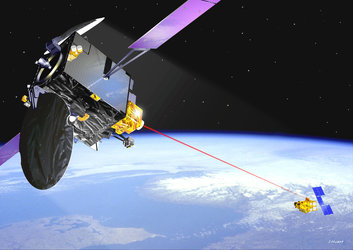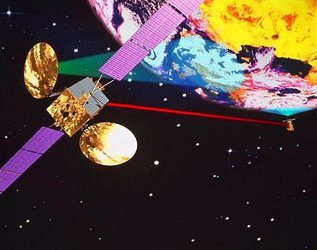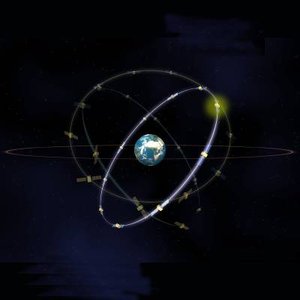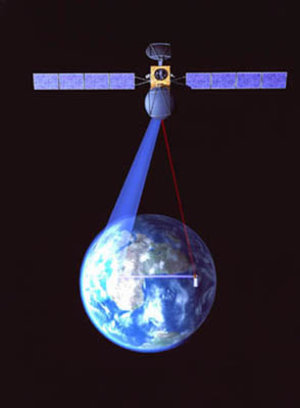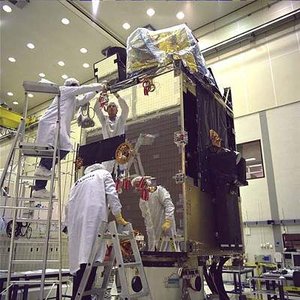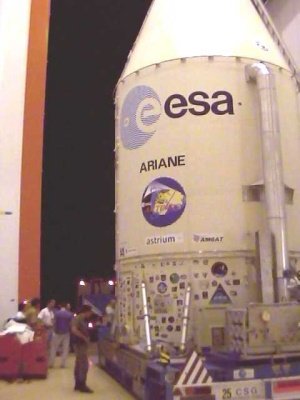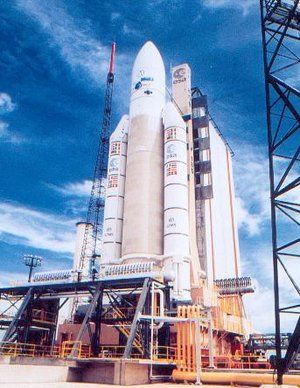Fast-track data from Earth orbit
Scientists collecting images of the Earth from European environment monitoring satellites will be among the first to benefit from Artemis - a new ESA telecommunications spacecraft to be launched this month.
The Artemis data relay package includes revolutionary laser technology that will significantly speed up the re-transmission of data gathered by spacecraft in low-Earth orbit. It will give Artemis an important role to play in the monitoring of environmental disasters or crisis situations, where speed is of the essence.
First to benefit from the new laser element of the Artemis data relay payload known as SILEX (Semiconductor Inter-satellite Link Experiment) will be the French Spot 4 Earth observation satellite, which is currently undergoing final preparations to its optical payload known as PASTEL (Passager Spot de Telecommunications) a special laser terminal that will beam data to Artemis.
However, ESA’s giant Earth observing satellite, Envisat, which is due to be launched later this year will be able to ensure that the vast amounts of environmental data it collects every day will reach stations quickly and efficiently through Artemis’ radio frequency data relay facility, which will also be used by the International Space Station.
Bernard Cabrieres, Head of Remote Sensing Satellite Operations at the French Space Agency, CNES, said: “Artemis will dramatically increase the global capacity of Earth observation activity in terms of the volume of data and will make significant improvements to the speed at which data can reach Earth in times of environmental disaster or other crisis situations.”
Soon after the scheduled launch of Artemis on 12 July, Spot 4 and Artemis will provide the first European demonstration of laser communications in space, with Artemis receiving data via a light beam from Spot 4 before re-transmitting it by radio beams direct to users in Toulouse.
One of the limitations of data transmission from low Earth orbiting (LEO) satellites is that they can only communicate with their ground station for a relatively small proportion of their orbit. Artemis, from its high position in geostationary orbit (GEO) will significantly expand that window, making it possible to relay data from a LEO satellite for at least 50% of the LEO orbit.

The OPALE laser terminal on Artemis (which is similar to the PASTEL terminal on Spot 4) will receive optical transmissions from Spot 4 and these will be re-transmitted in near real-time to the French Space Agency’s (CNES) ground station in Toulouse.
At present, gathered information may have to be stored on Spot 4's recording equipment for many hours before the spacecraft flies within range of a receiving station to ‘dump’ the data.
Because of its position 36,000 kilometres above the Earth and its broad band coverage, Artemis will be able to receive data from Spot 4 via the laser link and transmit it direct to Toulouse - cutting the time delay down from anything up to 20 hours to just a few minutes.
The SILEX experiment between Artemis and Spot 4 has a twofold objective – first to validate the concept of laser transmission and second to provide extra operational capabilities for transmitting Spot 4 imagery to the ground.
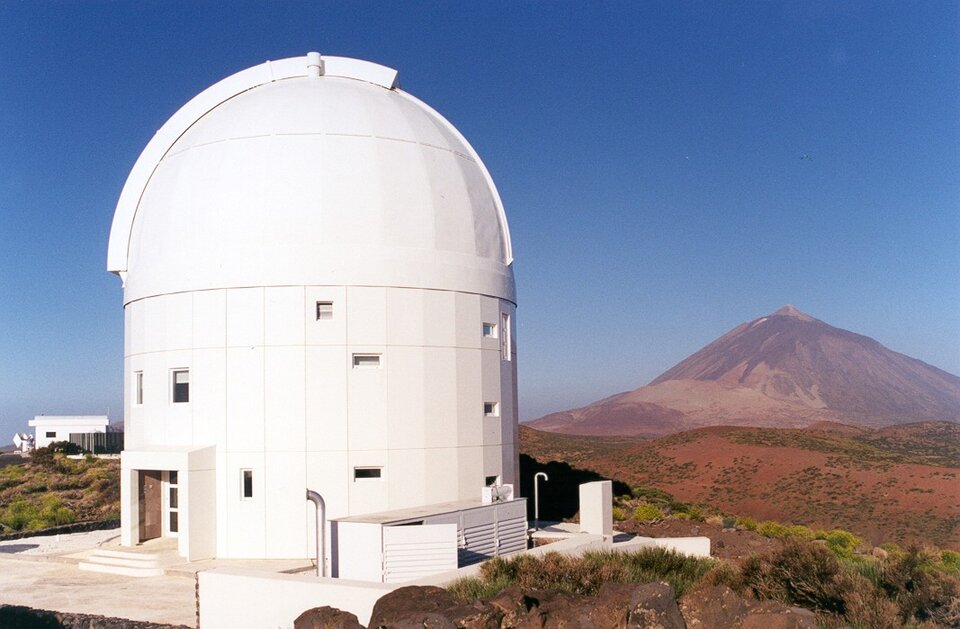
Since Spot 4 was launched in 1998, the spacecraft’s laser terminal has undergone commissioning and verification tests every two to three months. Part of this has involved pointing the laser at very bright stars, such as Sirius, to validate its accuracy.
“Laser communications has many advantages but as a new technology it has to overcome inherent difficulties” said Mr Cabrieres. “The SILEX experiment is a technological challenge. Aligning and stabilising two terminals, which are on average 38,500 km apart, is equivalent to hitting an orange with a rifle shot from 50 kilometres. By using distant stars we and our colleagues of ESOC at Redu have had plenty of target practice and are on course for the real thing.”
In anticipation of the Artemis launch, teams from ESA and Spot 4 have co-operated in various operations to ensure everything is working correctly on the SILEX terminal onboard Spot 4.
The first images transferred optically between Spot 4 and Artemis should be transmitted to Earth within the first five weeks of the new satellite’s 10-year lifetime. Thereafter the operation of regular optical data transmission will continue until the end of the SPOT 4 mission.





